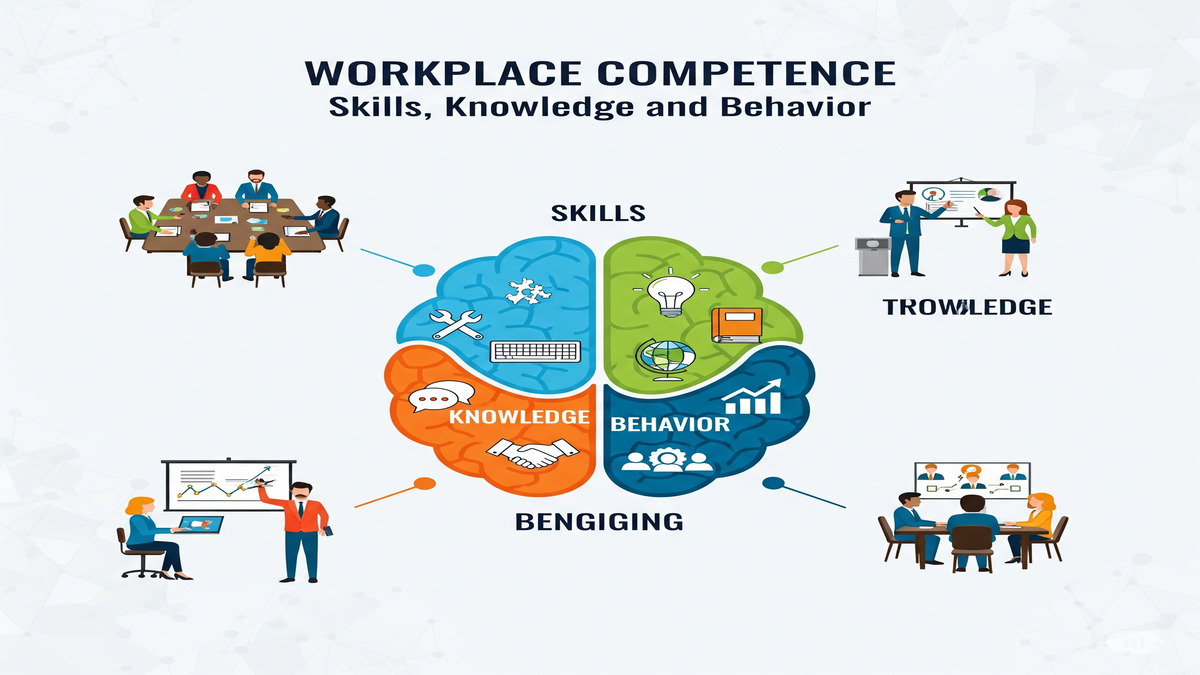Defining Competence in a Professional Setting
Being competent in the workplace means having the right blend of skills, knowledge, and behaviors to perform your role effectively and consistently meet expectations. Competence is not limited to technical expertise—it also involves problem-solving abilities, adaptability, collaboration, and communication skills. A competent employee understands their responsibilities, can prioritize tasks, and delivers quality work on time. They also demonstrate professionalism, integrity, and a willingness to keep learning. In essence, competence is about combining capability with reliability, so that colleagues and managers know they can depend on you to deliver results, even in challenging situations.
Core Elements of Workplace Competence
Competence is built on a foundation of both hard and soft skills. Hard skills refer to the technical abilities or specialized knowledge required for a job, such as accounting for a finance role, coding for a software developer, or project management for a team lead. Soft skills, on the other hand, include interpersonal abilities like communication, emotional intelligence, and teamwork, which are essential for working effectively with others. Competence also requires sound judgment, the ability to analyze situations, and the initiative to solve problems without constant supervision. It is not static; employees must continually adapt to new tools, processes, and industry trends to remain effective.
The Role of Professional Attitude
Workplace competence is closely linked to attitude. Even highly skilled employees can struggle if they lack a professional mindset. Reliability, accountability, and a positive approach to challenges are key traits of competent professionals. They take ownership of their work, follow through on commitments, and maintain focus under pressure. Competent employees also seek constructive feedback and use it to improve performance. Their approach to relationships matters as well—respecting colleagues, contributing to a healthy work culture, and avoiding behaviors that disrupt teamwork. A professional attitude ensures that skills and knowledge are applied in a way that benefits the entire organization.
Competency Management in the Workplace
To maintain a skilled workforce, many organizations use a structured approach called “competency management.” This process involves defining the skills, knowledge, and behaviors required for different roles, assessing employees against those standards, and providing development opportunities to close any gaps. Competency management helps align individual capabilities with company goals, ensuring that people are equipped to meet both current and future demands. It can also guide recruitment, training, and performance evaluations by providing clear, measurable benchmarks. When implemented well, competency management supports career growth for employees and builds a stronger, more agile organization.
Developing and Maintaining Competence
Competence is not something that develops overnight; it requires ongoing effort and a commitment to learning. Employees can build competence through formal education, professional certifications, on-the-job training, and mentorship. Actively seeking out new challenges, volunteering for cross-functional projects, and staying informed about industry developments are all ways to expand skills. Competent professionals also focus on self-management—organizing their workload, setting goals, and balancing priorities to maximize productivity. Maintaining competence means adapting to changes in technology, regulations, and business practices, so that skills remain relevant and valuable.
The Impact of Competence on Career Growth
Competence directly affects career progression. Employers are more likely to promote and invest in employees who consistently demonstrate strong skills, sound judgment, and reliability. Competent employees are trusted with more responsibility, which can lead to leadership opportunities and greater influence within the organization. They also tend to build stronger professional networks, as colleagues value working with individuals who contribute positively to shared goals. In competitive job markets, competence can be the deciding factor that sets one candidate apart from others, both for new roles and internal advancements.
Why Competence Benefits Organizations
For organizations, having competent employees means higher productivity, better decision-making, and a more positive workplace culture. Competence reduces errors, improves efficiency, and ensures that projects are completed on time and to a high standard. It also strengthens customer satisfaction, as clients and stakeholders interact with professionals who are knowledgeable and capable. When competence is widespread across a company, it creates resilience—teams can adapt to challenges, take on complex projects, and sustain high performance even during periods of change.
Conclusion: Competence as a Professional Standard
Being competent in the workplace is about more than meeting the minimum requirements of a job—it’s about consistently delivering value through skills, knowledge, and professional behavior. Competence builds trust, supports career advancement, and contributes to an organization’s success. While natural talent and education are important starting points, ongoing development and adaptability are what keep competence strong over time. With tools like competency management, companies can ensure their workforce stays aligned with evolving goals, and employees can chart a clear path for growth. Ultimately, workplace competence is a shared responsibility between individuals and organizations, and when both invest in it, everyone benefits.





